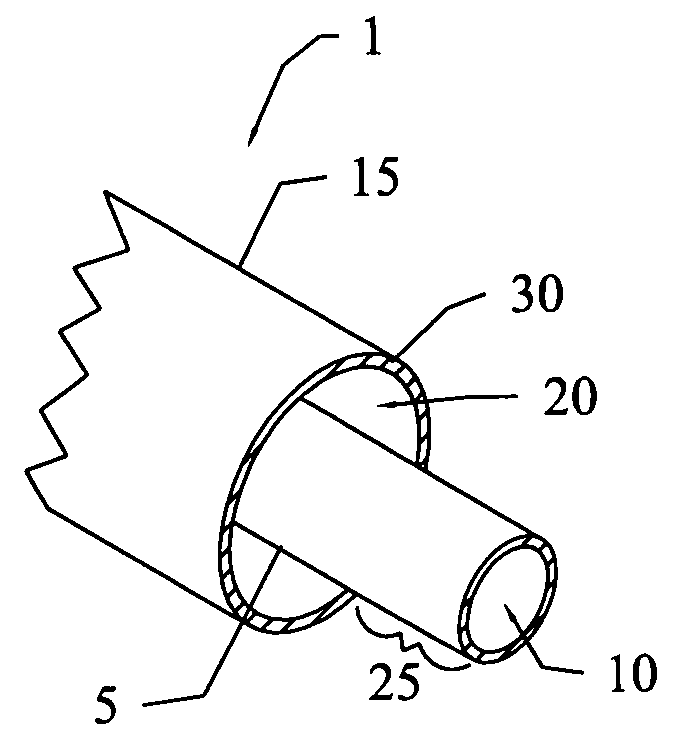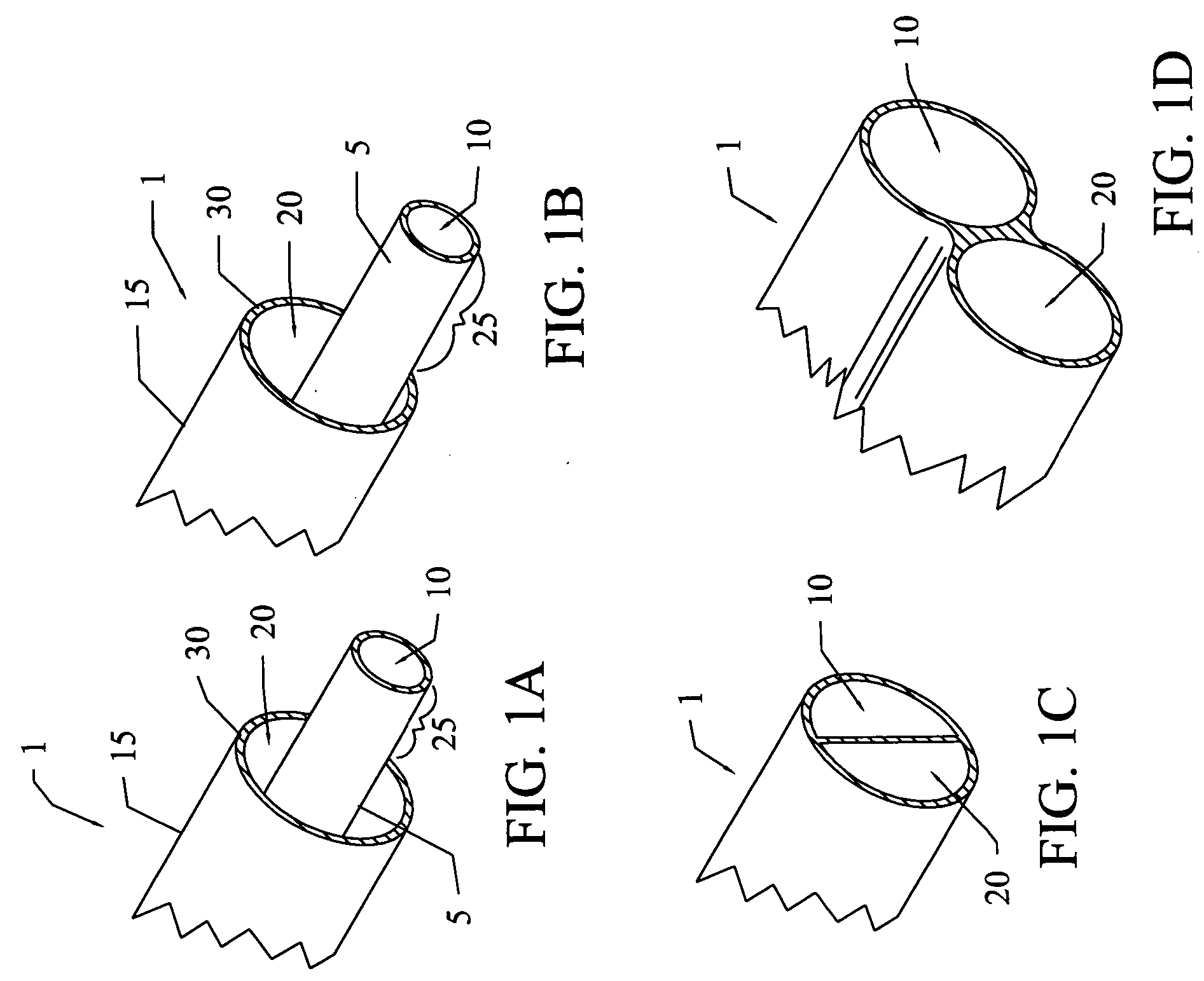Dialysis catheter system
a catheter system and dialysis technology, applied in the field of dialysis catheter systems, can solve the problems of affecting the quality of dialysis, the risk of infection and clotting, and the availability of catheters, so as to reduce the risk of infection, prevent fibrin and/or thrombin formation, and reduce the formation of fibrin sheaths.
- Summary
- Abstract
- Description
- Claims
- Application Information
AI Technical Summary
Benefits of technology
Problems solved by technology
Method used
Image
Examples
Embodiment Construction
[0033] The present invention provides a unique catheter for use during dialysis, in particular during hemodialysis. The invention pertains to a catheter primarily designed to function in reverse-flow, having a dual lumen configuration (i.e., co-axial, circle C, double D, and side-by-side configurations) in which the arterial lumen extends beyond the termination point of the venous lumen.
[0034] The catheter of the subject invention preferably functions in "reverse-flow" to aid in reducing fibrin sheath and / or thrombosis formation and to provide fluid return at effective flow rates and at lower pressures than those typically observed with traditional catheters designed to function in a non-reverse flow manner.
[0035] According to the present invention, dual-lumen, reverse-flow catheters can be formulated in a wide variety of configurations (see FIGS. 1A-1D). The dual-lumen catheter of the present invention can be formulated in the following configurations including, but not limited to,...
PUM
 Login to View More
Login to View More Abstract
Description
Claims
Application Information
 Login to View More
Login to View More - R&D
- Intellectual Property
- Life Sciences
- Materials
- Tech Scout
- Unparalleled Data Quality
- Higher Quality Content
- 60% Fewer Hallucinations
Browse by: Latest US Patents, China's latest patents, Technical Efficacy Thesaurus, Application Domain, Technology Topic, Popular Technical Reports.
© 2025 PatSnap. All rights reserved.Legal|Privacy policy|Modern Slavery Act Transparency Statement|Sitemap|About US| Contact US: help@patsnap.com



